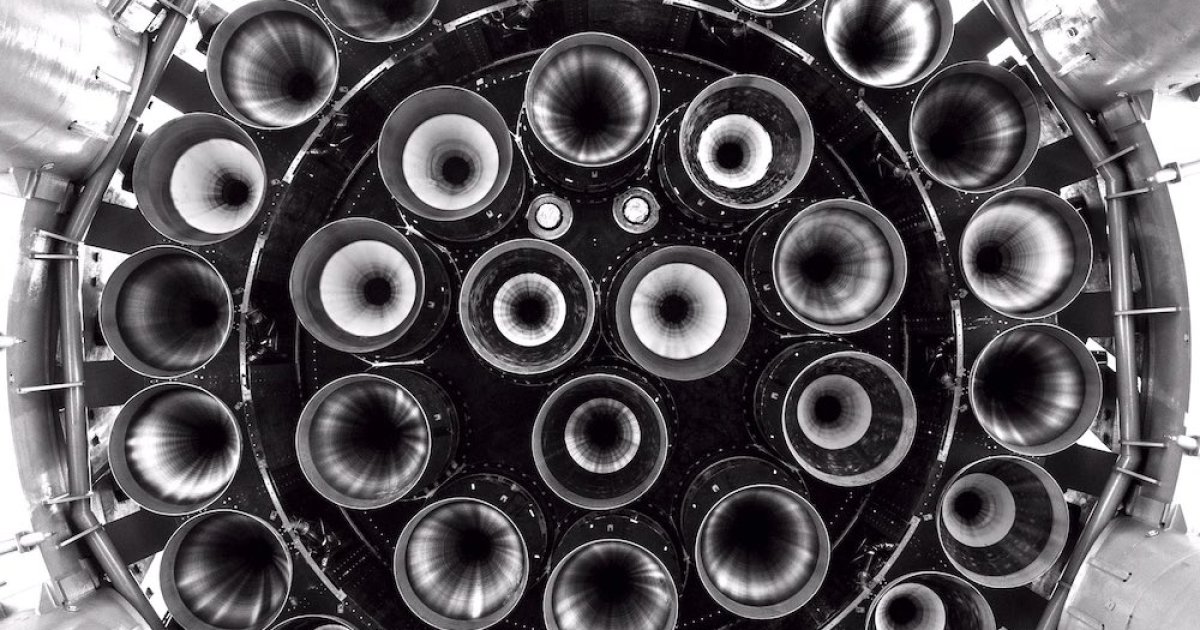Tech News
SpaceX’s holiday greetings involve a quirky rocket-engine nozzle dance

SpaceX has shared holiday greetings with a unique display of synchronized rocket-engine nozzle steering.
The video, lasting 65 seconds, features a message that reads: “Wishing you a warm holiday season and a lit New Year.” It kicks off with a direct view of SpaceX’s Super Heavy booster, the most powerful rocket ever built. The video showcases the Super Heavy’s 33 Raptor engines, which have powered the first-stage Super Heavy and upper-stage Starship spacecraft on six test flights from SpaceX’s Starbase site in Boca Chica, Texas. The upcoming test flight is scheduled for early January.
Wishing you a warm holiday season and a lit New Year pic.twitter.com/en4NyLbSk1
— SpaceX (@SpaceX) December 22, 2024
Please enable Javascript to view this content
As the music begins, the engine nozzles demonstrate synchronized movements, creating a visually appealing harmony.
This display showcases the Thrust Vector Control (TVC) mechanism, a technique used in aerospace engineering to steer rockets or vehicles by adjusting the direction of thrust from the engines.
The Super Heavy utilizes a gimbal-based TVC system that enables the nozzles to pivot along different axes, typically pitch and yaw.
By adjusting the thrust angle of the engines, precise control over the rocket’s orientation and trajectory is achieved, allowing for accurate maneuvers during launch, flight, and landing. Such systems are crucial for rockets operating in environments where aerodynamic control is limited, such as in space.
The video concludes with the Raptor engines firing at full power, likely captured during a static fire test or one of the test flights.
Once fully tested and certified, SpaceX and NASA plan to utilize the 120-meter-tall Super Heavy to transport crew and cargo to the moon as part of NASA’s efforts to establish a permanent lunar base. This base would enable astronauts to live and work similarly to how they do on the International Space Station. Looking ahead, the rocket could also be used for the first human mission to Mars, potentially in the 2030s.
Continuing with the holiday spirit, be sure to explore NASA’s rocket fireplace, described by the agency as “guaranteed to blow your guests away.”
-

 Destination8 months ago
Destination8 months agoSingapore Airlines CEO set to join board of Air India, BA News, BA
-

 Breaking News10 months ago
Breaking News10 months agoCroatia to reintroduce compulsory military draft as regional tensions soar
-

 Gadgets3 months ago
Gadgets3 months agoSupernatural Season 16 Revival News, Cast, Plot and Release Date
-

 Tech News12 months ago
Tech News12 months agoBangladeshi police agents accused of selling citizens’ personal information on Telegram
-

 Productivity11 months ago
Productivity11 months agoHow Your Contact Center Can Become A Customer Engagement Center
-

 Gadgets3 weeks ago
Gadgets3 weeks agoFallout Season 2 Potential Release Date, Cast, Plot and News
-

 Breaking News10 months ago
Breaking News10 months agoBangladesh crisis: Refaat Ahmed sworn in as Bangladesh’s new chief justice
-

 Toys12 months ago
Toys12 months ago15 of the Best Trike & Tricycles Mums Recommend























